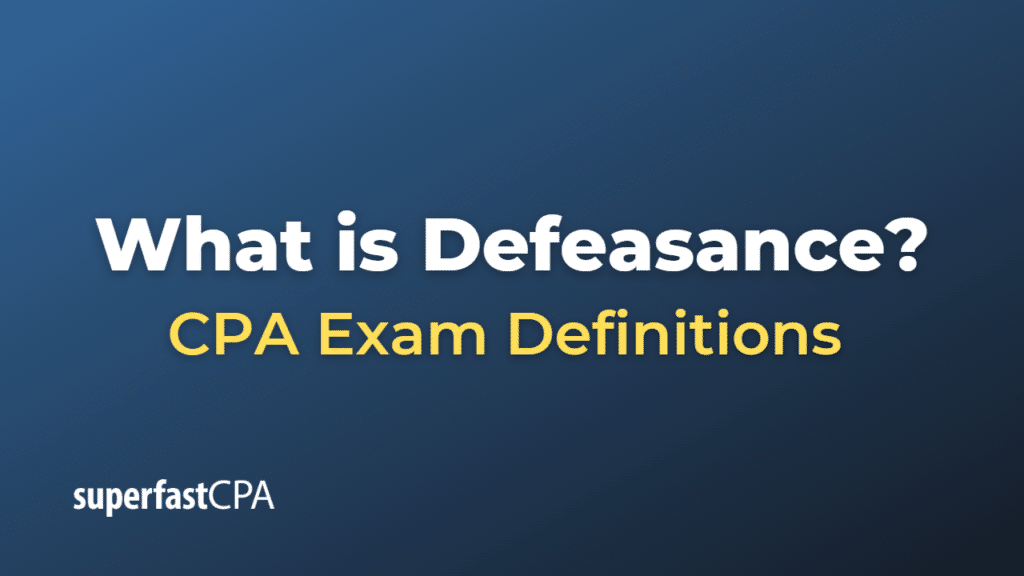Defeasance
Defeasance is a financial strategy where an issuer of debt, such as a corporation or government entity, sets aside enough cash or bonds in a trust to service the debt (both principal and interest) until it matures or is called. This effectively “defeases,” or reduces, the issuer’s obligation to the lenders.
The bonds or cash set aside in the trust must be risk-free or very close to risk-free, which typically means they are backed by U.S. government securities.
Once the trust is created and the assets are set aside, the debt is considered defeased. The issuer is relieved of most of the covenants associated with the debt and the debt is no longer reported as a liability on the issuer’s balance sheet.
Defeasance is often used in real estate or corporate finance when a borrower wants to be released from covenants or restrictions tied to a loan before it matures. It’s also commonly used in the management of municipal bonds.
However, it’s important to note that the process of defeasance can be complex and may have significant tax and accounting implications. Therefore, it typically requires careful analysis and the use of financial and legal advisors.
Example of Defeasance
Let’s consider a hypothetical example involving a corporation:
Suppose XYZ Corporation issued bonds with a total face value of $10 million due in 10 years. The bond agreement includes certain covenants that restrict XYZ’s business operations. For example, XYZ might not be allowed to take on additional debt above a certain limit or engage in certain types of business activities.
Five years later, XYZ’s business has grown significantly, and it wants to expand into new areas and take on additional debt. However, the covenants in the bond agreement are limiting its options.
To remove these restrictions, XYZ Corporation decides to go through the process of defeasance. They do this by setting aside $10 million worth of risk-free U.S. government bonds in a trust. These bonds have the same maturity date as XYZ’s bonds and generate enough interest to cover the periodic interest payments on XYZ’s bonds.
Once this is done, XYZ’s bonds are considered defeased. Even though XYZ is still technically responsible for the debt, the trust is now effectively servicing the debt. XYZ can remove the bonds from its balance sheet and is no longer subject to the covenants in the bond agreement.
This gives XYZ the freedom to expand its business and take on additional debt as needed. However, it’s important to note that setting up the defeasance required XYZ to set aside a significant amount of assets in the trust, which could have been used for other purposes.













